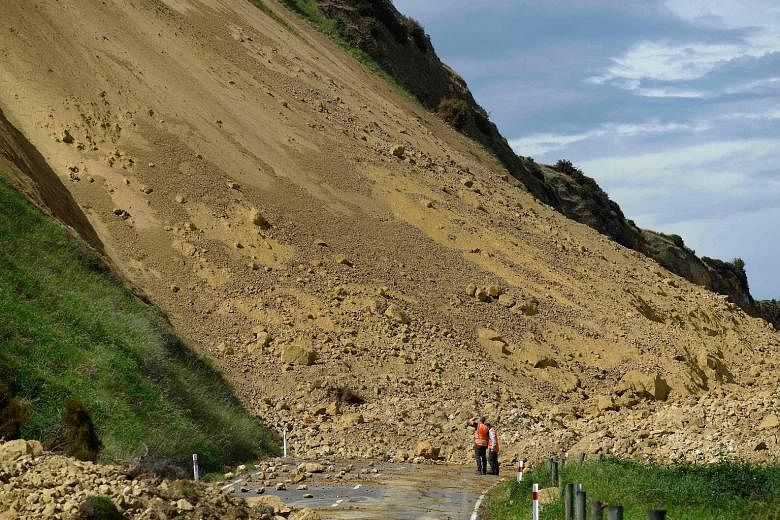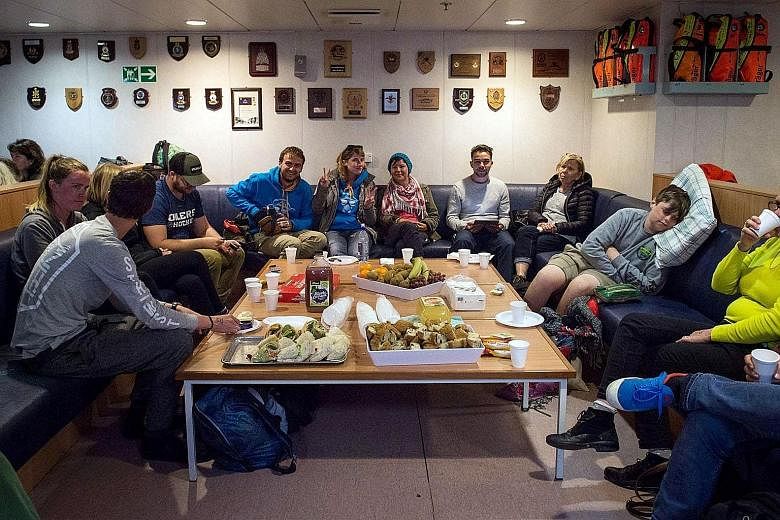CHRISTCHURCH • Rescuers in New Zealand have completed a mass evacuation of tourists stranded after a devastating earthquake, as the authorities warned of stronger aftershocks over a longer period of time.
The last of the trapped holidaymakers boarded the navy ship HMNZS Canterbury late yesterday at Kaikoura, the South Island seaside town that bore the brunt of the powerful 7.8-magnitude tremor.
At the time of the quake, Kaikoura's population of 2,000 was bolstered by about 1,000 tourists, attracted by the region's renowned whale-watching cruises.
They were stranded when the tremor, which claimed two lives, severed road and rail access, leaving the town short of water and with little power.
"We got them all out, it was a superhuman effort," Red Cross spokesman Simon Makker told AFP from the stricken town. "The last of them were cheering and dancing down the street on their way out. It was pretty cool."
Vessels from the United States, Canada and Australia are steaming towards the town to provide emergency supplies and logistical support. "There might still be a few stragglers left, but the focus now turns to the welfare of the residents," Mr Makker said.
-
7.8
Magnitude of the quake. It is the joint second-strongest recorded in New Zealand.
1,700
Number of aftershocks, complicating relief efforts.
GeoNet, the country's geological monitor, officially upgraded the quake's magnitude from 7.5 to 7.8 yesterday and said that it was one of the most complex earthquakes ever recorded on land, The Guardian reported.
"As expected with a larger earthquake, the revised magnitude does have an effect on the probabilities of forecast aftershocks," said Acting Civil Defence Minister Gerry Brownlee in a statement.
"Meaning it is now forecast that aftershocks may be larger in magnitude for a longer period of time," he added.
Monday's tremor was felt across the country, causing violent shaking in Wellington about 250km away.
The capital was initially thought to have escaped serious damage, but the local council said yesterday that engineering inspectors had raised concerns about some 60 downtown buildings.
At least one has been rated as under imminent threat of collapse and will be carefully demolished, while another was a new government office block that was supposed to be quake-proof.
Prime Minister John Key said he was "staggered" at the building's failure, given the strict building codes in Wellington, which sits on a network of fault lines.
"Questions need to be asked and that's going to happen," he told Radio New Zealand.
The tremor, one of the most powerful ever in the quake-prone South Pacific nation, has been followed by more than 1,700 aftershocks, complicating relief efforts.
The quake triggered numerous landslides that dumped mountains of rocky debris on a main highway and ripped railway lines 10m off their track bed, while huge fissures opened up in roads and houses were rocked off their foundations.
GeoNet said reconnaissance flights had noted between 80,000 and 100,000 landslips.
The 7.8 quake is the joint second-strongest ever recorded in New Zealand. It stirred painful memories for residents of Christchurch, which was devastated five years ago by a 6.3 tremor that killed 185.
The country is on the boundary of the Australian and Pacific tectonic plates, which form part of the so-called Ring of Fire, and experiences up to 15,000 tremors a year.
AGENCE FRANCE-PRESSE, XINHUA


